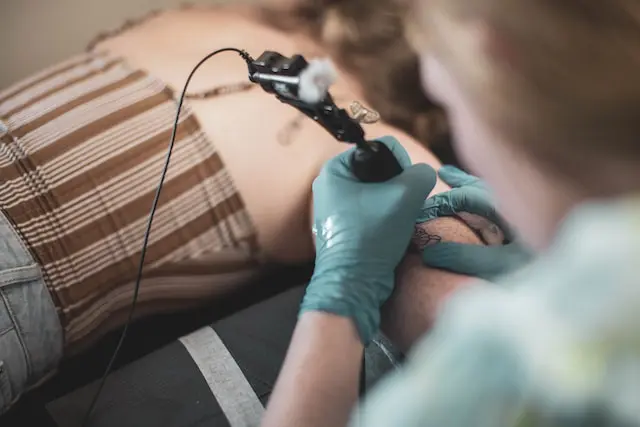Tattoos, once considered permanent expressions of identity or art, are now subject to change thanks to advancements in tattoo removal technologies. Whether it’s a change in personal taste, a desire to erase a reminder from the past, or the need for a clean canvas, understanding your options for tattoo removal is a crucial step in the journey to reclaim your skin.
1. Laser Tattoo Removal
Laser tattoo removal stands out as the most common and effective method for erasing tattoos. This technique utilizes specialized lasers that break down the tattoo ink into smaller particles, allowing the body’s natural processes to flush them away. Different types of lasers target specific ink colors, making this method suitable for a wide range of tattoos.
The procedure involves multiple sessions spaced several weeks apart, allowing the skin to heal between treatments. While laser removal is generally safe, it may cause temporary discomfort, redness, or blistering. Consulting with an experienced professional is essential to determine the number of sessions required and manage expectations.
2. Surgical Tattoo Removal
For certain tattoos, especially those with deep or stubborn ink, surgical removal may be recommended. This process involves cutting out the tattooed skin and stitching the remaining skin back together. While surgical removal provides immediate results, it often leaves a scar, and the size of the tattoo can impact the complexity of the procedure.
Surgical tattoo removal is typically reserved for smaller tattoos, and the healing process may require diligent aftercare to minimize scarring. It’s important to consult with a skilled surgeon to assess whether this method is suitable for the specific tattoo and individual skin type.
3. Dermabrasion
Dermabrasion is a technique that involves mechanically sanding off the top layers of skin to reach the tattooed area. While less common than laser removal, dermabrasion can be effective for certain types of tattoos, particularly those closer to the skin’s surface.
During dermabrasion, a high-speed rotary device removes the outer layers of skin, causing the tattoo to fade gradually. This method may require multiple sessions, and there is some discomfort during the recovery period. Dermabrasion is generally suitable for smaller tattoos and may not be recommended for individuals with certain skin conditions.
4. Topical Tattoo Removal Creams
Topical tattoo removal creams are available over the counter and claim to gradually fade tattoos with regular application. These creams work by breaking down the tattoo ink and encouraging it to fade over time. While convenient, it’s essential to manage expectations, as results may vary, and complete removal is not guaranteed.
The effectiveness of topical creams depends on factors such as the tattoo’s size, age, and the type of ink used. Additionally, individuals with sensitive skin should exercise caution and perform a patch test before using these products.
5. Intense Pulsed Light (IPL) Therapy
Intense Pulsed Light (IPL) therapy, while more commonly associated with hair removal, is also used for certain types of tattoo removal. This method employs broad-spectrum light to target and break down tattoo pigments. IPL is particularly effective for tattoos with red, orange, or yellow ink.
Similar to laser removal, IPL therapy requires multiple sessions for optimal results. It’s essential to consult with a qualified practitioner to assess whether IPL is a suitable option based on the tattoo’s characteristics and the individual’s skin type.
Choosing the Right Option
Selecting the most suitable option for tattoo removal depends on various factors, including the tattoo’s size, color, depth, and the individual’s skin type. Consulting with a qualified tattoo removal specialist is crucial to receive personalized advice and develop a treatment plan tailored to your unique circumstances.
During a consultation, the practitioner will assess the tattoo, discuss your goals, and provide information on the expected number of sessions, potential side effects, and aftercare instructions. This personalized approach ensures that you are well-informed and confident in your decision, minimizing the risk of complications and optimizing the chances of successful tattoo removal.
Conclusion
Understanding your options for tattoo removal empowers you to make informed choices about your skin’s journey. Whether opting for the precision of laser removal, the targeted approach of IPL therapy, or exploring surgical or dermabrasion methods, each option has its merits and considerations. Remember that patience is key, as most tattoo removal methods require multiple sessions for optimal results.
In the end, the decision to remove a tattoo is personal, and the evolving landscape of tattoo removal technologies offers individuals the opportunity to embrace change and redefine their relationship with their skin. By seeking professional guidance, you embark on a journey toward a tattoo-free canvas, allowing for new beginnings and fresh expressions of identity.


